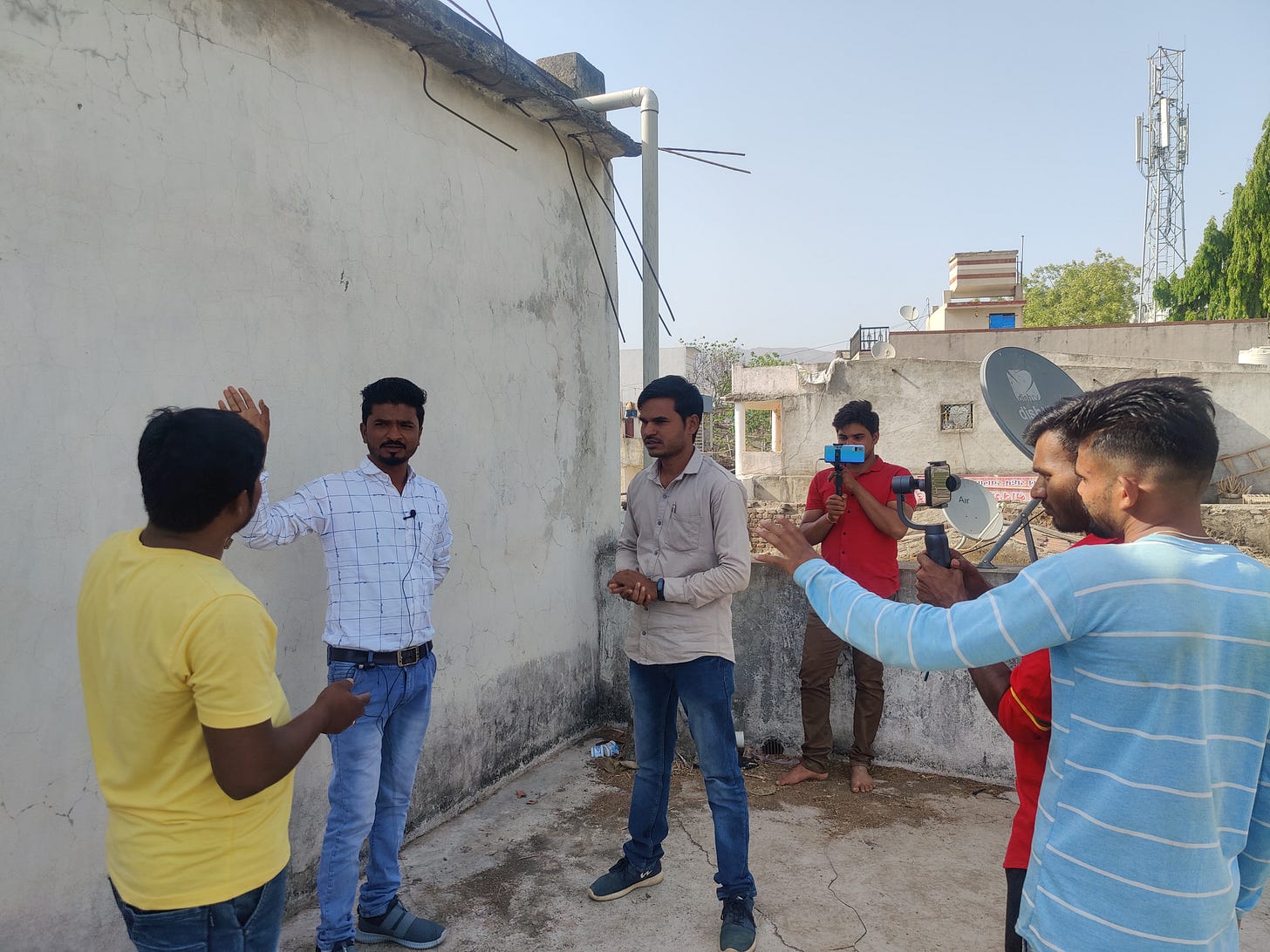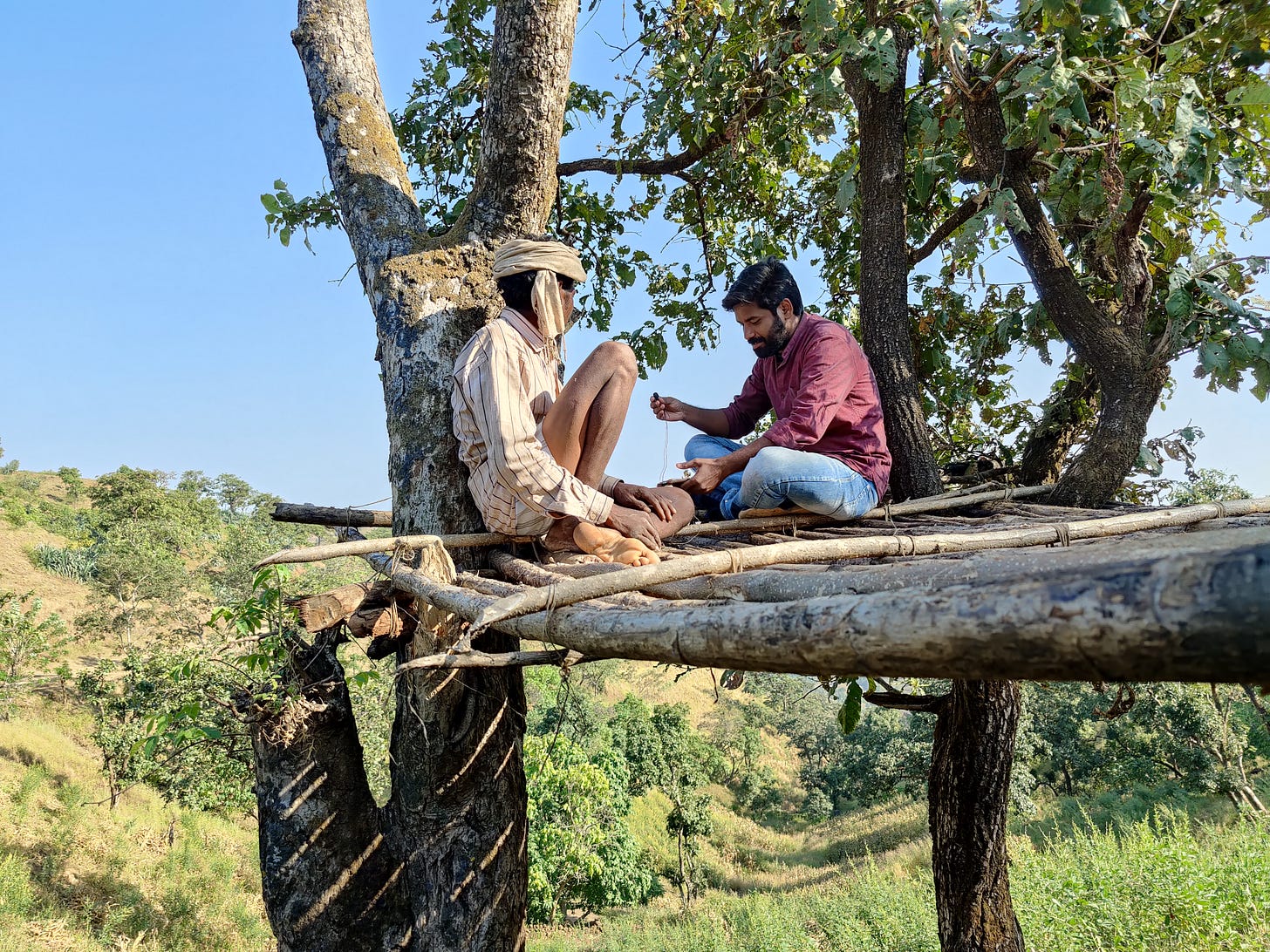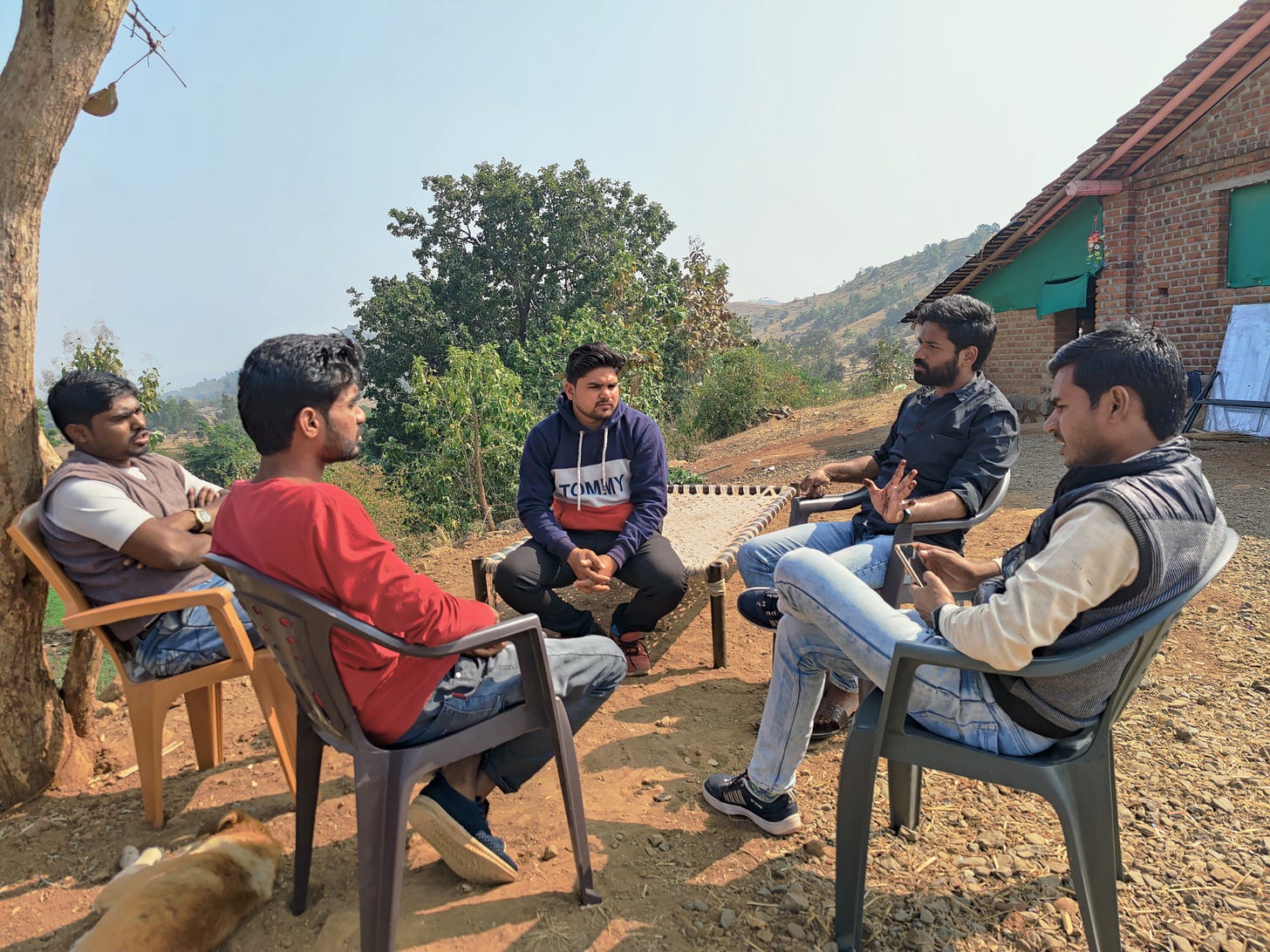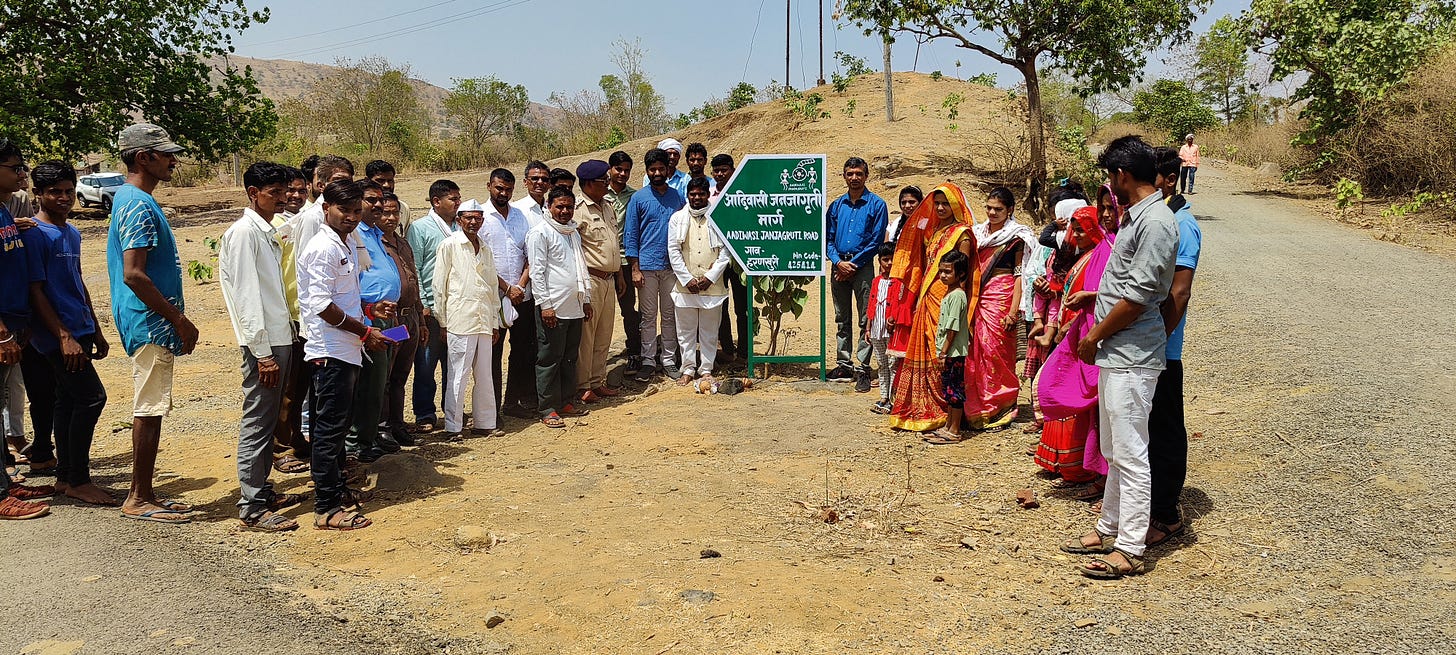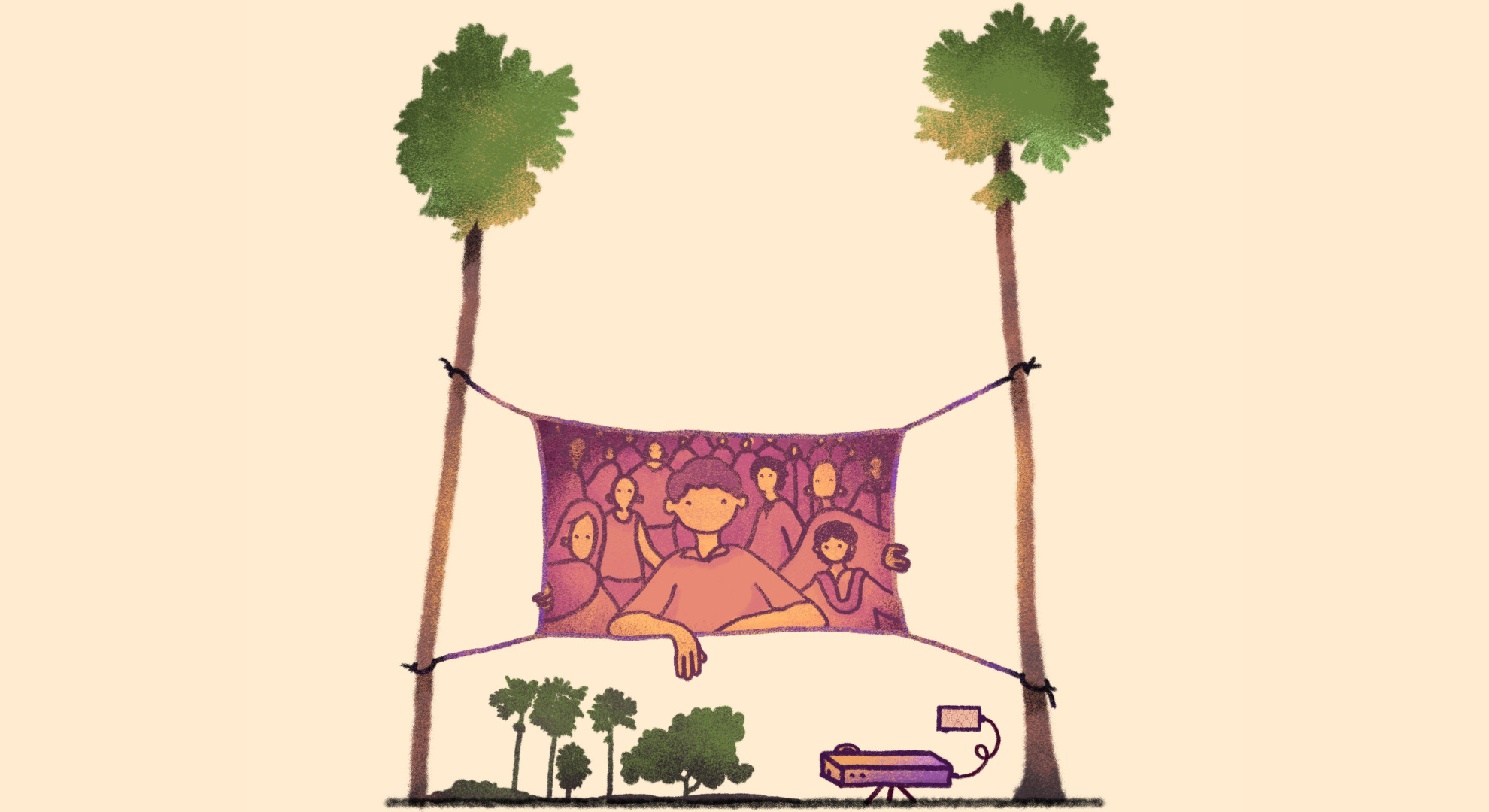
Today, anyone can make a small film using a smartphone and free editing software. It makes video a convenient and easy-to-use medium for storytelling. In the hands of the Aadiwasi Janjagruti team, this has become a powerful tool for change for the tribal residents of Dhadgaon, an underdeveloped block in the district of Nandurbar in Maharashtra.
Led by Nitesh, Rakesh, and Arjun, and over fifty volunteers, Aadiwasi Janjagruti is a hyperlocal media organisation where ‘producer bhi hum hai, consumer bhi hum hai.’
Videos are not an end in themselves but rather a means to make the people’s grievances visible and bring the government’s attention to issues that matter.
“Media village level pe nahi hai. Media block level pe bhi nahi hai. Toh isse kya hota hai ki transparency jo hai, woh nahi banti hai. Hand pump meri gaon ka kharab hai, toh mujhe CM ke paas jane ki zaroorat nahi hai. Hand pump kharab hai, Sarpanch banwa dega. Gram Sevak banwa dega. Uske liye CM ke paas jane ki zaroorat nahi hai. Similarly, BBC ko hand pump ke liye aane ki zaroorat nahi hai. NDTV handpump ke liye nahi ayenge. Hand pump ke liye gaon ka chota sa media organisation kaam kar sakta hai,” explains Nitesh.
Aadiwasi Janjagruti started when Nitesh arrived at Dhadgaon in 2016 on a State Bank of India fellowship. Along with college students and some local youth, he began making videos to create awareness about child marriage and child labour, sanitation, superstitions, and, sometimes, local welfare schemes that people in the area were eligible for. They shot on borrowed phones and asked their neighbours and friends to act in sketches they wrote or made up. These videos were made for compelling local content and were an instant hit amongst the people.
Soon enough, something interesting started happening. People started sharing their problems. Problems that ranged from roads not built, to daily wage work not being available, to bribes they had to pay to get the money that was rightfully theirs under various schemes. That’s when the team started making videos about people’s issues, identifying beneficiaries, and relaying their needs to the government.
In the process, they also started to uncover and solve systemic corruption that was taking place.
For example, they learnt about people’s challenges while accessing their welfare money through mini-banks. Or while they tried to get an FIR registered in cases of physical harm or more sensitive matters of rape and murder, where police and other authorities were refusing to take necessary action to file a case and start legal proceedings.
Each time, they use video interviews of the aggrieved persons to bring out the facts of the case. These videos are then typically published on their YouTube channel and circulated over WhatsApp, reaching just about everybody in the locality and making it impossible for authorities to take no action in the face of injustice.
In a place rife with corruption and nothing gets done without money exchanging hands, the fact that the Aadiwasi Janjagruti team can get ‘paise ke bina nyaay’ has won them the trust and appreciation of the people. This, and the fact that they are young, local volunteers with no legal background, using media instead of any traditional tools of law to secure justice for the people. Institutions also know they cannot keep operating in the dark as they always have; their actions and inactions that can be brought to light in a short video.
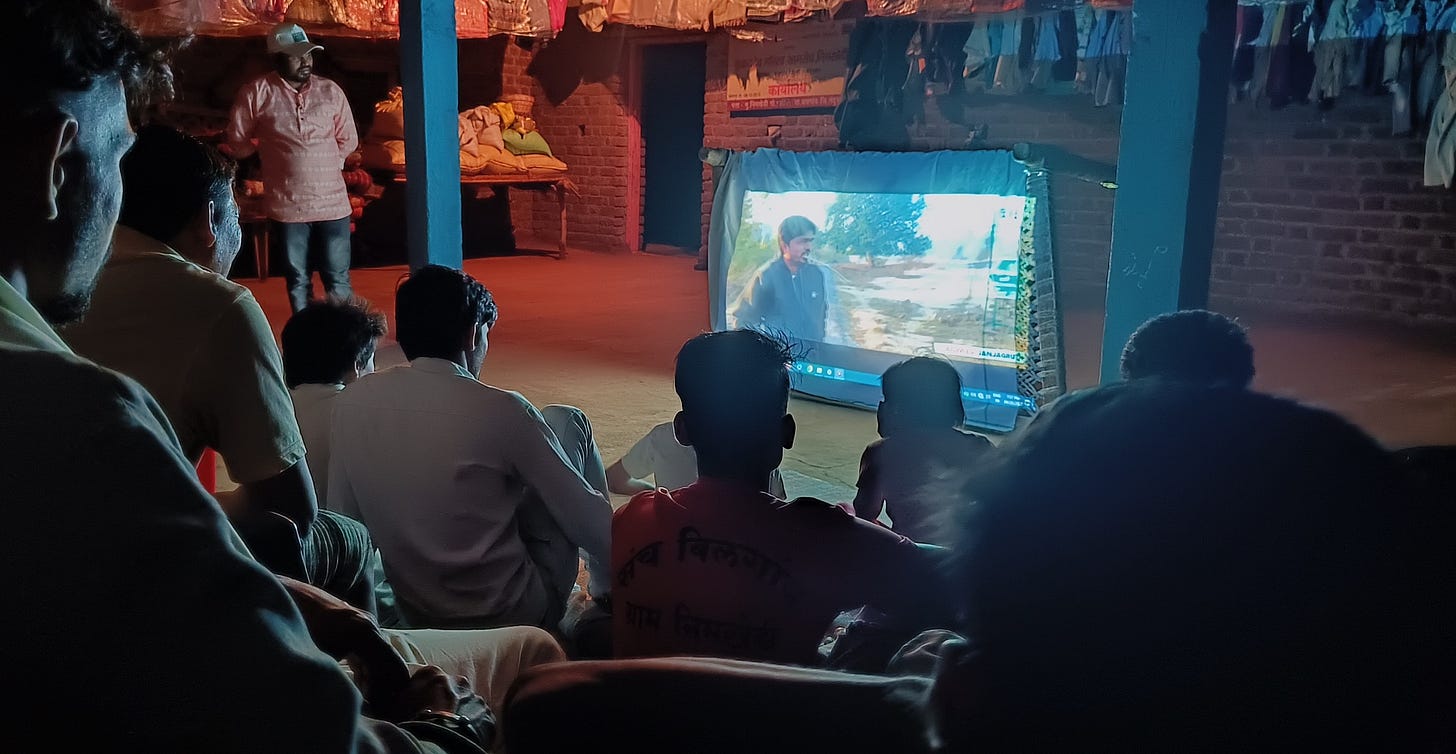
These days, whenever something big or small goes wrong, people first call a local volunteer from the Aadiwasi Janjagruti team for assistance.
There are volunteers to be found across the 166 villages in Dhadgaon. They are the faces or the ‘leaders’ of Aadiwasi Janjagruti for their villages— meaning they serve as the first point of contact and support for any issue.
Even the core team and founders always engage with the villages via them. It is a kind of experimental, distributed leadership, serving justice to the people closest and around. The volunteers’ sense of ownership and responsibility towards their community shows that while all of them hold other jobs - when it comes down to it, and there is an immediate need - their role as members of Aadiwasi Janjagruti takes priority.
On activating leadership in the community
“Hum kya kar rahe hai, hum chah rahe hai, aise chhote chhote media organisations, village level pe baney, jo self sustainable ho. Leaders, humein kuch aur create karne ki zaroorat nhi hai, sirf chhote chhote aise leaders banane ki zaroorat hai, har gaon mein, agar wo leader create ho gya na to wo pure gaon ko change kar sakta hai, sirf ek do aadmi hi change kar sakta hai, bahot pure gaon ko change karne ki zaroorat nhi hai. Humare liye ye important nhi hai ki wo successful ho ya failure ho, humare liye ye important hai, mere liye personally, jo wo aadmi utha raha hai na, usko ye rahe agli baar wo khud se uthaye, mere paas na aaye, pehla. Doosra ye hai ki, wo utha raha hai na, bhale hi wo story, bhale hi wo success ho ya fail ho, uske mann mein ye baat aa jani chahiye na ki main utha sakta hun ye baat.”*
In turn, the community shows their support by partially funding the organisation - through small amounts voluntarily contributed by the people and advertisements from local tea and sari shops, alongside small award money and monetising their YouTube channel.
This has been a conscious approach of the founders, making the community an essential stakeholder in their work. For them, the organisation is nothing.
They want to focus on building a network of local leaders who feel capable and confident about solving their own and their communities’ justice issues. After all, as they say, “Hume Dhadgaon ko banana tha. Uss process mein Aadiwasi Janjagruti ban gaya.”
Notes:
*Nitesh Bhardwaj, founder of Aadiwasi Janjagruti, in conversation with Supriya Sankaran during Agami Prize 2022.
Edited by Jahnavi Jayanth, Keerthana Medarametla and Supriya Sankaran.



